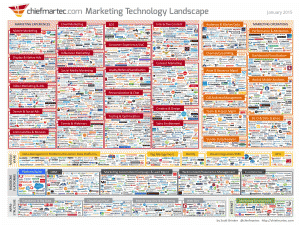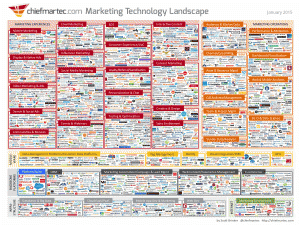
Seven Interesting Observations (other than eye-popping spending growth projections) from Forrester’s recent Commerce Platform Technology Forecast
Forrester Research recently published their epic US Commerce Platform Technology and Services Forecast, 2014 to 2019 report, which shows a very bullish market for online retail. Overall platform growth is expected to increase at a 12.1% compound annual growth rate through 2019, growing from $1.2 billion in 2014 to $2.1 billion in 2019. And growth in services will keep pace (where LYONSCG earns its revenue), increasing from $5.1 billion in 2014 to $9.7 billion by 2019.
These top-line revenue numbers reflect the reality that those of us in eCommerce have long understood–there’s a lot of investment today, with plenty of growth potential! But while the growth numbers are widely reported, and exciting to hear, the stories behind the growth numbers reflect some of the most interesting findings in the report.
Digging past the forecasts themselves we found seven interesting comments, observations, and projections in the report by authors Peter Sheldon and Michael Yamnitsky.
1. Platform Lifecycles are Shortening. From 2000 to 2010, the average life cycle of an eCommerce system lasted more than seven years. Since 2000, Forrester has seen platform life expectancy declining, with average life cycle now lasting between five and six years.
Another driver of frequent replatforming has been from operators who have have failed to invest in regular upgrades. The accumulated impact of this neglect means that for many merchants, it may be more cost effective to undertake a complete platform selection and replatform initiative.
2. Homegrown Systems on the Decline:Homegrown systems are starting to show significant scalability, compliance and maintainability risks. While only 13% of manufacturing, retail and wholesale firms have home built systems today, Forrester expects that percentage will decline, with SaaS-model eCommerce platforms picking up the difference.
3. Future Industry Growth rides on B2B.Forrester doesn’t mince words: “B2B commerce will shift from a nice-to-have for the most innovative enterprises to a must-have in order to compete in an increasingly competitive global market.
4. Mobile as an Imperative:As alternative digital touch points (mobile, table, kiosks, and wearables) become more popular, firms need to move beyond meeting projections of supporting online sales capabilities, and build capability to experiment with new delivery and engagement capabilities. A good starting point to learn more is the recent LYONSCG webinar on Getting Mobile eCommerce Right, available as an on-demand replay.
Over the past year, we’ve seen many LYONSCG clients replatform or add capabilities for responsive and adaptive website technology to accommodate shoppers using tablet and mobile shopping. If a merchant lacks that capability today, adding it should be a top priority. Almost no replatform projects exclude some mobile capability.
5. Omnichannel Execution: There has been plenty of industry discussion on the importance of omnichannel capabilities. There has been a complete shift of the role of online commerce, from simply existing as a separate sales channel, to a critical part of an integrated strategy that supports complex pick-up, ship-to-store, ship-from-store, inventory visibility, and associate enablement . Investment in new order management systems–either incorporated into the eCommerce platform or as a standalone systems, will become an increasingly important investment.
6. Rise of the Customer Experience Management Stack:Building from the Omnichannel comments above, eCommerce management is expanding past the online store capabilities and is considered part of a broader “Digital Experience” stack that includes web content management, digital asset management, product information management and digital experience management. In addition, extended technology solutions such as site search, recommendation engines, A/B testing, and social plug-ins are increasingly common as part of an overall eCommerce initiative.We can see the complexity for the eCommerce professional through the ever expanding Digital Technology Landscape chart published by Scott Brinker. Blogging at the ChiefMarTech blog, Scott annually maps the marketing technology ecosystem in a massive “Marketing Technology Landscape Supergraphic,” which now encompasses nearly 2000 firms. While not all categories are relevant for online merchants, a great many of them are.

Source: ChiefMarTech Blog / Scott Brinker (click to enlarge)
7. eCommerce is a compulsory pillar of digital experience technology. If there’s anything that stands out from the report, it’s the obvious conclusion that online commerce is becoming a strategic business element–not a sales channel, and not limited to consumer markets. There is a tremendous amount of business investment taking place.
We’d love to hear your thoughts. Please comment below, or reach out with your thoughts via Twitter, LinkedIn or Facebook!
An engineer by education and marketer by choice, Steve Susina uses data and analytics to help firms generate demand, establish thought leadership and strengthen the company brand. He currently serves as Marketing Director for Lyons Consulting Group, a full-service eCommerce digital agency.
